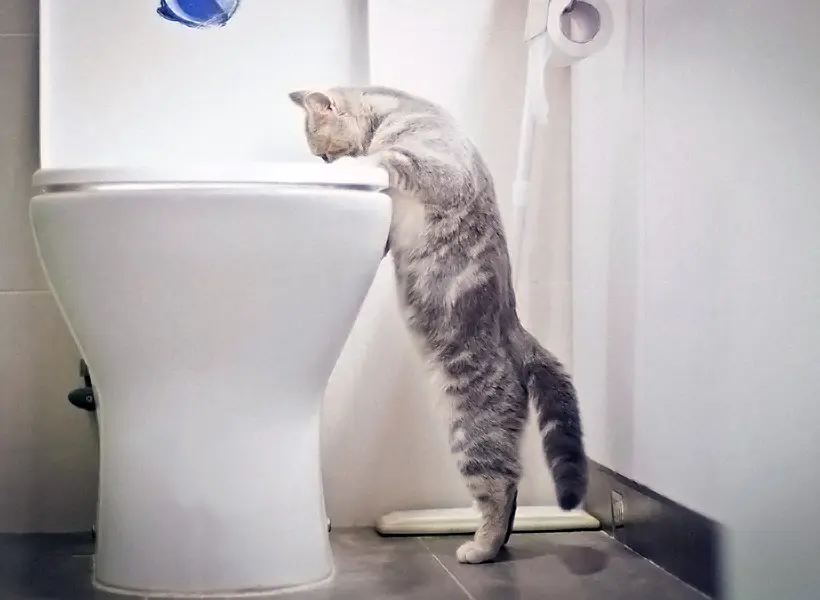Why Flushing Cat Poop Down Your Toilet Isn't a Good Idea - Advice for Proper Handling
Why Flushing Cat Poop Down Your Toilet Isn't a Good Idea - Advice for Proper Handling
Blog Article
How do you really feel on the subject of How to Dispose of Cat Poop and Litter Without Plastic Bags?

Intro
As feline proprietors, it's important to bear in mind exactly how we throw away our feline good friends' waste. While it might seem convenient to purge feline poop down the toilet, this technique can have destructive repercussions for both the environment and human wellness.
Alternatives to Flushing
Luckily, there are safer and extra accountable ways to take care of feline poop. Consider the complying with alternatives:
1. Scoop and Dispose in Trash
The most common approach of throwing away cat poop is to scoop it into an eco-friendly bag and throw it in the trash. Make sure to make use of a dedicated trash inside story and take care of the waste quickly.
2. Use Biodegradable Litter
Select eco-friendly cat litter made from products such as corn or wheat. These litters are eco-friendly and can be securely disposed of in the trash.
3. Bury in the Yard
If you have a yard, consider hiding pet cat waste in a designated area far from vegetable gardens and water resources. Make sure to dig deep sufficient to prevent contamination of groundwater.
4. Install a Pet Waste Disposal System
Buy a family pet waste disposal system especially designed for feline waste. These systems make use of enzymes to break down the waste, lowering smell and ecological influence.
Health Risks
Along with environmental problems, flushing pet cat waste can likewise pose wellness dangers to humans. Pet cat feces might contain Toxoplasma gondii, a parasite that can cause toxoplasmosis-- a potentially extreme disease, specifically for pregnant ladies and people with damaged immune systems.
Environmental Impact
Flushing feline poop presents hazardous microorganisms and parasites into the water, posing a significant risk to water environments. These impurities can adversely affect aquatic life and compromise water quality.
Conclusion
Responsible pet possession prolongs beyond offering food and shelter-- it also involves correct waste administration. By refraining from purging feline poop down the bathroom and opting for different disposal techniques, we can reduce our environmental footprint and secure human health.
Why Can’t I Flush Cat Poop?
It Spreads a Parasite
Cats are frequently infected with a parasite called toxoplasma gondii. The parasite causes an infection called toxoplasmosis. It is usually harmless to cats. The parasite only uses cat poop as a host for its eggs. Otherwise, the cat’s immune system usually keeps the infection at low enough levels to maintain its own health. But it does not stop the develop of eggs. These eggs are tiny and surprisingly tough. They may survive for a year before they begin to grow. But that’s the problem.
Our wastewater system is not designed to deal with toxoplasmosis eggs. Instead, most eggs will flush from your toilet into sewers and wastewater management plants. After the sewage is treated for many other harmful things in it, it is typically released into local rivers, lakes, or oceans. Here, the toxoplasmosis eggs can find new hosts, including starfish, crabs, otters, and many other wildlife. For many, this is a significant risk to their health. Toxoplasmosis can also end up infecting water sources that are important for agriculture, which means our deer, pigs, and sheep can get infected too.
Is There Risk to Humans?
There can be a risk to human life from flushing cat poop down the toilet. If you do so, the parasites from your cat’s poop can end up in shellfish, game animals, or livestock. If this meat is then served raw or undercooked, the people who eat it can get sick.
In fact, according to the CDC, 40 million people in the United States are infected with toxoplasma gondii. They get it from exposure to infected seafood, or from some kind of cat poop contamination, like drinking from a stream that is contaminated or touching anything that has come into contact with cat poop. That includes just cleaning a cat litter box.
Most people who get infected with these parasites will not develop any symptoms. However, for pregnant women or for those with compromised immune systems, the parasite can cause severe health problems.
How to Handle Cat Poop
The best way to handle cat poop is actually to clean the box more often. The eggs that the parasite sheds will not become active until one to five days after the cat poops. That means that if you clean daily, you’re much less likely to come into direct contact with infectious eggs.
That said, always dispose of cat poop in the garbage and not down the toilet. Wash your hands before and after you clean the litter box, and bring the bag of poop right outside to your garbage bins.
https://trenchlesssolutionsusa.com/why-cant-i-flush-cat-poop/
As a devoted person who reads about Can You Flush Cat Poo or Litter Down the Toilet?, I assumed sharing that excerpt was important. Are you aware of someone else who is in to the subject? Why not share it. Thanks for going through it.
Need Help? Hire Us Now! Report this page